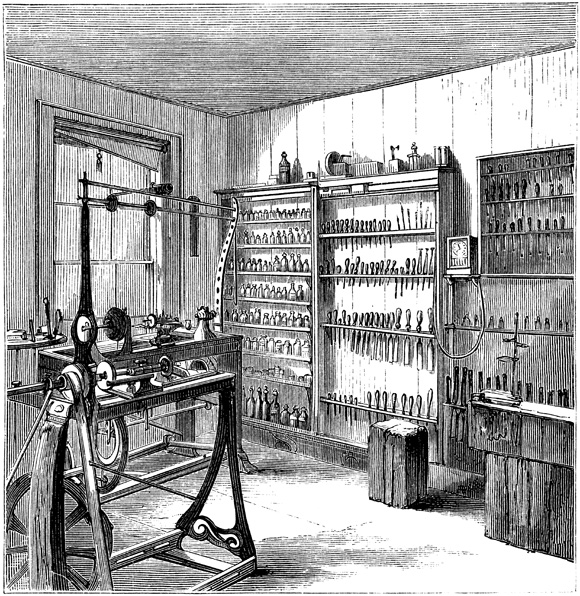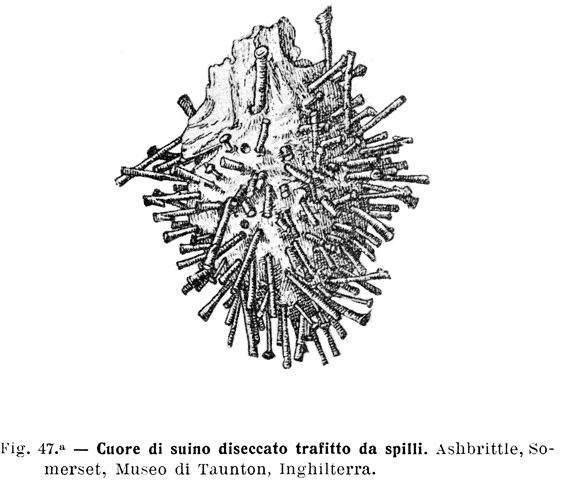hardware literature
art fiction film music television history language poetry stores tools hardware catalog jmcvey.net

from John Todd: the story of his life told mainly by himself (1876) : link
more on Todd : link
A (temporarily very) few “nails” entries appear further down this page, here.
![]()
- The Believer
Below are authors and titles of all the tool pieces that have run in The Believer, mostly in 2003-04, and a couple since then. Some of the featured tools and objects are actual, others fanciful. Alphabetically ordered by author surname. Thanks to Elline Lipkin for this.
aside —
updated (and checked) links today, 23 June 2023.John Brandon : Norco 71222 Lightweight Floor Jack
The Believer 6:5 (June 2008) : linkManuel Gonzalez : Poultry Shears
The Believer 1:4 (July 2003) : linkEli Horowitz : Putty Knife
The Believer 1:9 (December 2003 - January 2004) : linkJessica Lamb-Shapiro : The Long Arm
The Believer 2:2 (March 2004) : linkE. Tyler Lindvall : Invacare Folding Shower Chair
The Believer 2:1 (February 2004) : link (to issue, but not essay, which is not available online)
archived excerpt below :
$55.00
FEATURES:
Folds for storage and travel
Textured nonslip seat with drain holes
Contoured durable plastic seat and backrest
Built-in holder for optional handheld shower
Durable 1″ anodized aluminum frame will not rust
Lifetime limited warranty
Shower time is the most relaxing and productive time of my day. I daydream. I fantasize. I scheme. I plot the novel I never seem to write when dry. I read and reread instructions and ingredients on the backs of shampoo and conditioner bottles. Through the window, I watch traffic on the George Washington Bridge. I shower so long that my hands and foot prune.
Last month my special lady-friend bought me the Invacare Folding Shower Chair Model 9981, which has four aluminum legs and a white plastic seat and backrest, each with strategically placed holes for drainage. Sadly, the folding feature is counterintuitive and clumsy. So I don’t bother with it, leaving the shower chair planted in the middle of the tub for my special lady-friend to circumnavigate.
The Invacare Folding Shower Chair Model 9981 is the Cadillac of shower chairs. I know of which I speak. Ten years ago I had the misfortune of having my left leg amputated, causing me to change much of my daily routine — not the least of which being my shower ritual. I quickly learned standing on a slick shower floor with one foot is not only dangerous, it’s tiring. So, I have spent much time in different showers sitting on different things — including lawn chairs, a cinderblock, plastic milk crates, and an assortment of shower chairs, some made by Invacare and some not.Ben Marcus : Anti-Fatigue Mat
The Believer 2:3 (April 2004) : linkBen Marcus : Jet 708521JWP-12DX 121/2 Portable Planer
The Believer 1:1 (March 2003) : linkBen Marcus : 3M Micro Abrasives
Ben Marcus, The Believer 1:8 (November 2003) : linkMary Roach : Amra Eye Caps
The Believer 1:5 (August 2003): linkKevin Smokler : The Ace Heavy-Duty Glue Gun
The Believer 1:7 (October 2003) : linkJeff Steinbrink : Retractable Dog Leash
The Believer 2:11 (November 2004) : linkSarah Stewart Taylor : The Burdizzo® Emasculatone 9
The Believer 1:3 (June 2003) : linkWells Tower : Stanley Tools Magnetic Wall Stud Finder 47-400
The Believer 1:2 (May 2003) : linkCaitlin Van Dusen : Knight & Hale EZ-Grunt-Er Plus Deer Call
The Believer 6:2 (February 2008) : linkAyelet Waldman : Krups FDE3-12 Universal Grill And Panini Maker
The Believer 1:6 (September 2003) : link
- Ivan Illich, from his Tools for Conviviality (1973) —
“A convivial society should be designed to allow all its members the most autonomous action by means of tools least controlled by others. People feel joy, as opposed to mere pleasure, to the extent that their activities are creative; while the growth of tools beyond a certain point increases regimentation, dependence, exploitation, and impotence. I use the term
tool
broadly enough to include not only simple hardware such as drills, pots, syringes, brooms, building elements, or motors, and not just large machines like cars or power stations... [but also factories] and productive systems for intangible commodities such as those which produce ‘education,’ ‘health,’ ‘knowledge,’ or ‘decisions.’”“Tools are intrinsic to social relationships. An individual relates himself in action to his society through the use of tools that he actively masters, or by which he is passively acted upon. To the degree that he masters his tools, he can invest the world with his meaning; to the degree that he is mastered by his tools, the shape of the tool determines his own self-image. Convivial tools are those which give each person who uses them the greatest opportunity to enrich the environment with the fruits of his or her vision. Industrial tools deny this possibility to those who use them and they allow their designers to determine the meaning and expectations of others. Most tools today cannot be used in a convivial fashion.”
(pp 20-21)These passages, and indeed Illich’s entire argument, resonate now, as hyperindustrialized Japan starts bumping against natural, infrastructural and institutional limits to its 50-year-long miracle. The text resides online here.

- Work, life, tools : The things we use to do the things we do / based on an exhibition created by Milton Glaser and the Steelcase Design Partnership (1997).
features a ruminative essay by Stanley Abercrombie in addition to mini-essays by 50 people about a tool in their lives.

nails
- Giuseppe Bellucci (1844-1921). I chiodi nell’etnografia antica e contemporanea. Perugia: Unione tipografica cooperativa, 1919

The above (rather emblematic) image —
dried pig heart, pierced by pins
— is taken from this fascinating volume that frames nails more broadly and in greater relief than I’d previously understood. It is here that I learned of the tradition of monumental sculptures, made of wood, that are completed when their entire surface has been enclosed by nails. The locus classicus of this may be theIron Hindenburg,
described by the New York Times (5 September 1915) as athirty-foot wooden statue which will be sheathed with gold, silver, and iron nails purchased in the interest of a fund for the rehabilitation of East Prussia.
U California copy, via hathitrust : link

- old annotated bookmarks tagged “nails” used to appear here (delicious, via a javascript element) but no longer. will add these (from pinboard.in) in due course (20230623)

- See also the entry for Samuel Beckett his Film (1965), here.

1 July 2023